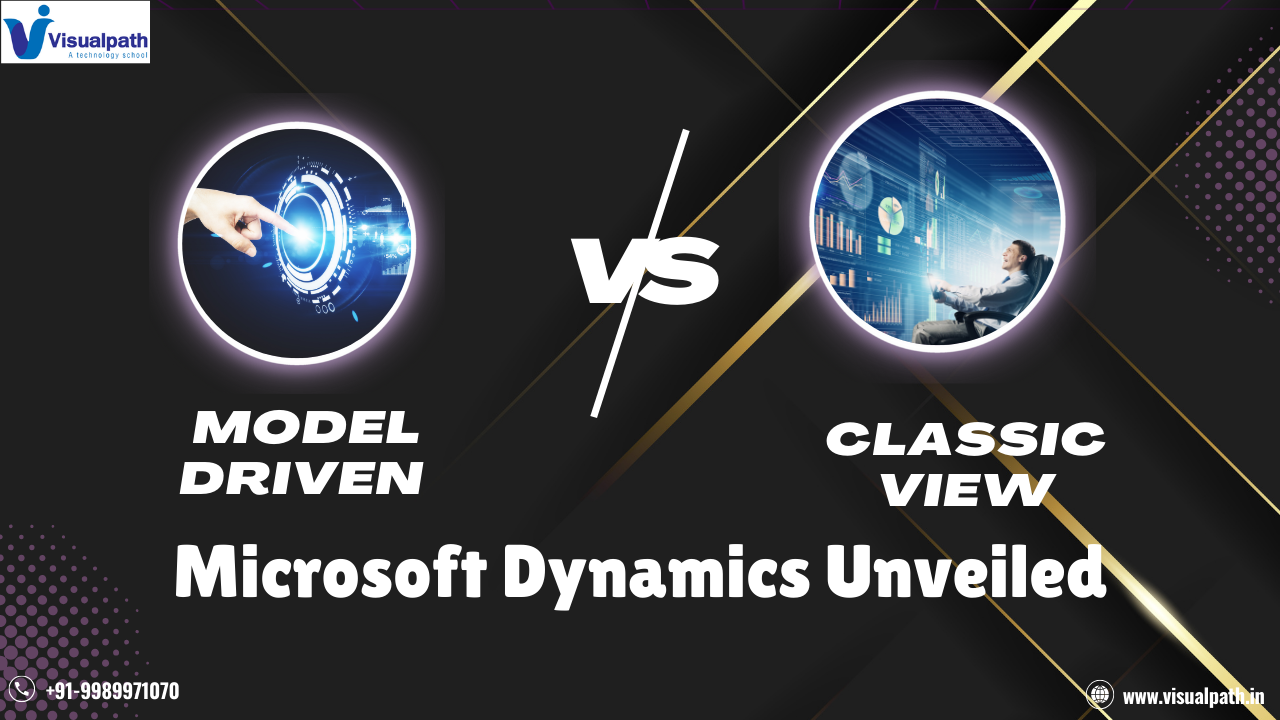Microsoft Dynamics 365 Training Courses is a powerful suite of business applications designed to streamline operations, enhance customer relationships, and enable data-driven decision-making. Over the years, the platform has evolved significantly, introducing new user experiences and features. One key area of evolution is the shift from the “Classic View” to the “Model-Driven View.” Understanding the differences between these two interfaces is essential for organizations transitioning to modern solutions MicroSoft Ax Training.
Classic View
The Classic View has been the backbone of Microsoft Dynamics since its inception. It offers a traditional interface that many users have relied on for years. This view is highly customizable and provides extensive flexibility in terms of layouts, forms, and workflows. Its tabular design and straightforward navigation make it easy for users to access records, manage tasks, and perform operations efficiently. For organizations with legacy systems, the Classic View often integrates seamlessly, ensuring minimal disruption during implementation Microsoft Dynamics 365 Training Courses.
One of the notable advantages of the Classic View is its familiarity. Long-term users find it comfortable to use due to its consistent design and well-established functionality. Additionally, this interface supports custom scripts and plug-ins, enabling businesses to tailor the system to their unique requirements. However, as Microsoft Dynamics has progressed, the Classic View has faced limitations. It lacks modern UI elements and does not align with Microsoft’s current focus on user experience and cross-platform accessibility.
Model-Driven View
The Model-Driven View represents Microsoft’s next-generation interface, focusing on modern design principles, enhanced usability, and advanced capabilities. Built on the Power Platform, the Model-Driven View emphasizes a component-based approach, where users can create and configure applications by defining relationships, forms, and processes.
This interface offers a cleaner, more intuitive experience, with responsive designs that adapt seamlessly across devices, including desktops, tablets, and smartphones. The Model-Driven View leverages the Unified Interface framework, ensuring a consistent look and feel across all applications within Dynamics 365. Key features such as embedded Power BI dashboards, AI-driven insights, and integration with Microsoft Teams further enhance productivity MicroSoft Ax Training.
Organizations adopting the Model-Driven View benefit from enhanced scalability and improved performance. Unlike the Classic View, the Model-Driven View is optimized for cloud environments, making it ideal for businesses seeking to leverage Microsoft’s cloud-first strategy. While this transition requires a learning curve, the long-term advantages—such as better user engagement and streamlined processes—make it a worthwhile investment.
Key Differences
The Classic and Model-Driven Views differ significantly in terms of user experience, customization, and functionality. The Classic View is rooted in traditional designs, offering extensive customization through legacy tools. In contrast, the Model-Driven View prioritizes a modern and dynamic interface, leveraging Microsoft’s latest technologies to deliver an integrated experience.
For instance, the Model-Driven View’s responsive design ensures consistent usability across various devices, while the Classic View’s design is more static and best suited for desktop users. Additionally, the Model-Driven View supports advanced capabilities such as AI-driven recommendations and embedded analytics, which are not available in the Classic View. These differences highlight Microsoft’s shift toward innovation and its commitment to meeting evolving business needs.
Considerations for Transition
Transitioning from the Classic View to the Model-Driven View requires careful planning and execution. Organizations need to evaluate their current workflows, customizations, and user adoption strategies to ensure a smooth migration. Training and change management play a crucial role in helping employees adapt to the new interface and fully utilize its capabilities. By addressing potential challenges early, businesses can minimize disruptions and maximize the benefits of the Model-Driven View.
Another critical consideration is the alignment of IT infrastructure. Since the Model-Driven View is optimized for cloud environments, organizations still relying on on-premises solutions may need to modernize their infrastructure. Leveraging Microsoft’s cloud ecosystem, including Azure and Power Platform, can significantly enhance the performance and scalability of Dynamics 365 applications. These steps ensure that businesses are well-positioned to harness the full potential of the Model-Driven View.
Conclusion
The transition from Classic View to Model-Driven View in Microsoft Dynamics 365 marks a significant evolution in the platform’s journey. While the Classic View continues to serve organizations reliant on legacy systems, the Model-Driven View offers a forward-looking approach aligned with modern business demands. Its enhanced features, scalability, and integration capabilities make it the preferred choice for businesses aiming to stay competitive in a digital-first world.
Organizations must assess their specific needs, resources, and long-term goals when deciding between the two interfaces. For those already using the Classic View, planning a phased migration to the Model-Driven View ensures a smooth transition while leveraging the best of both worlds. Ultimately, embracing the Model-Driven View empowers businesses to unlock the full potential of Microsoft Dynamics 365, driving efficiency and innovation in today’s fast-paced landscape.
Visualpath is the Leading and Best Institute for learning in Hyderabad. We provide MicroSoft Dynamics Ax Online Training in Hyderabad. You will get the best course at an affordable cost.
Attend Free Demo
Call on – +91-9989971070
Blog: https://topmicrosoftdynamicsax.blogspot.com/
What’s App: https://www.whatsapp.com/catalog/919989971070/
Visit: https://www.visualpath.in/online-microsoft-dynamics-ax-technical-training.html




